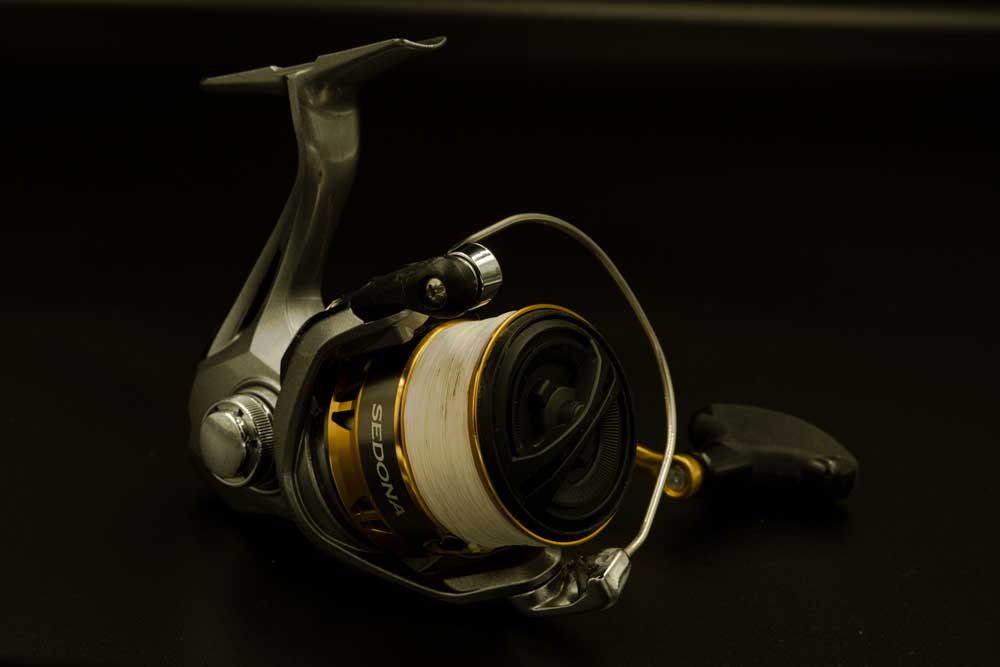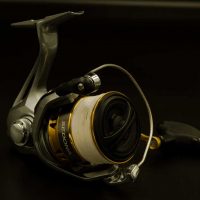Every lure angler has gone through the struggle of choosing the right spinning reel. Some learn from their mentors, others from mistakes. But if you don’t have a personal mentor that doesn’t necessarily mean you have to make mistakes to learn. Not in this era!
I have designed this guide on how to choose a spinning reel. If you are a beginner this will be extremely
beneficial for you. Just give it a five-minute read, you could save loads from investing in the wrong spinning reels.

Determine the Water Body
The first thing to do is determining the water body where you will be fishing. The water body tells what kind of fish you are after. In freshwater you will be hooking small to medium fish, and in saltwater you will primarily be hunting down larger fish.
It goes without saying, the bigger the fish, the more durable and tough fishing gear you need. Not only the size of fish, but the water itself also matters a lot. It is not a great idea to use a freshwater fishing reel in saltwater, because saltwater is extremely destructive, it will ruin any metal that isn’t saltwater protected. Saltwater causes corrosion on the metal which damages the reel. Most importantly once saltwater gets inside the bearings, it slows down the bearing speed and then stops the bearing from moving. And then you end up having to get a new reel.
Saltwater reels need to be corrosion-resistant and incredibly sealed so saltwater cannot get inside. Visit https://fishersline.com/best-ultralight-spinning-reels/ for some of the top-notch ultralight spinning reels on the market right now.
If you will be fishing in lakes, ponds, rivers, streams, etc. then you don’t need a saltwater spinning reel, but if you already have a saltwater spinning reel then you can use it. On the other hand, if you will be doing surf fishing or deep inshore fishing then you will be needing a top-notch saltwater spinning reel that can handle long lines and heavy lures.

Choosing the right Reel Size
Once you have determined the water body, the next thing you need to determine is the spinning reel size. There is a large range of sizes from small to large, and you need to pick the suitable size for you. Now how do you know which size will be ideal for you? Very easy, determine the average strength of the line you will use most of the time. For example, if you will be using an 8-pound test line then choose a reel size that is suitable for a 6 to 10-pound line. Choose a little bigger size than the need, in that way you will be able to increase up or down the line according to your need.
Still, confused? No worries, have a look at the following chart, everything will become clear!
| Reel Size | Mono Line Capacity | Braid Line Capacity | Water Type | Suitable fish species |
| Small (1000 – 3500) | 2 – 10 lbs | 4 – 14 lbs. | Rivers, bays, harbours, ponds, etc. Where water moves slow. | Trout, small bass, bream, pan fish, other small species. |
| Medium (4000-5500) | 8 – 14 lbs. | 15 – 50 lbs. | Light offshore boat fishing and slow-moving water. | Large bass, cod, small salmon, other boney fish, etc. |
| Large (6000 – 8500) | 12 – 45 lbs. | 30 – 80 lbs. | Inshore, off-boat, off-dock fishing. | Cod, ling, pollock, snapper, salmon, other medium sized fishes. |
| Extra Large (10000- 30000) | 12 – 60 lbs. | 50 – 100 lbs. | Deep inshore, offshore, fast moving water. |
Tuna, kingfish, shark, Mahi Mahi, Marlin, Halibut, other saltwater large fishes. |
Choosing the right Material
Spinning reels are made of different materials, and serve different purposes. That fact is true of every fishing reel as they are all made of different materials. The higher quality the material and the construction is, the better the reel is.
So if you want to invest in a good material then you must know about every material that is widely used in reel
construction. And when you know the pros and cons of each material you will be able to determine which
material to go for.
There are four materials widely used in making spinning reels: plastic, carbon fibre, graphite and aluminium.
Plastic: A low-quality material and if you want to do serious fishing then it is a no-go! Plastic-made spinning reels are for beginners who have never held a fishing rod before and for kids who want to play in the water. However, some plastic-made spinning reels are OK to catch small fish in freshwater.
Graphite: This one is a decent material, it offers decent durability and toughness. It is a little lightweight and a little
expensive than plastic for obvious reasons. If you are a beginner I would suggest you go for a graphite-made spinning reel. You will be able to do little fishing in freshwater.
Aluminium: This for serious fishing. Aluminium spinning reels are tough and pretty durable, but they are heavy. A great choice for the intermediate anglers who sink the lure in both salt and freshwater. Aluminium reels cost more than graphite.
Carbon fibre: This is the best material for fishing reels right now. Manufacturers use this material in high-end fishing reels and they perform incredibly as well. These reels are extremely lightweight and durable. Plus, they are rust-resistant. Suitable for both freshwater and saltwater. Carbon fibre rod and reels are very expensive though they deliver proper value for the bucks.
Final verdict
To sum up, go with graphite if you are a beginner who is just learning to hold the rod. Choose aluminium if you are an intermediate angler. And go with Carbon fibre when you get really serious.








